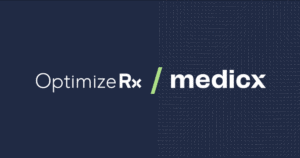If there’s one battle that life sciences marketers have to fight over and over, it’s trying to make the most of a limited advertising budget with little meaningful data. Unfortunately, that’s a challenge that many teams find themselves unable to escape.
Despite tracking performance consistently – and making adjustments to their strategy over time – brand marketing and advertising teams in healthcare and pharmaceuticals often hit a wall. But why is this endless optimization loop so common?
The answer? Poor audience quality.
Opaque Measurement Leads to Poorly Performing Life Sciences Brands
You can always change your creative, refine your messaging, or redefine your target audience. Without meaningful insights from your campaign analytics, how can you confidently optimize your campaign for better performance?
That’s the challenge that many marketing teams are facing, unknowingly or not.
Virtually all marketers would acknowledge that measuring campaign results over time is a must. Tracking performance gives you the ability to course-correct when a campaign goes awry. But the reality is that most of the analytics digital marketers generate are more data than insight.
Most campaigns result in audience match rates between 29% and 62%. The lower the match rate, the more reluctance marketers should have to assign meaning to changes in campaign performance.
If you’re not reaching your target audience consistently, how can you know what to change? Was it the visuals, the messaging, or the channels? Or maybe it was the wrong audience altogether? With poor audience quality, marketers are left to rely more on guesswork than strategy, making it more difficult to pivot or repeat past success with patient and healthcare provider (HCP) audiences.
3 Digital Marketing Challenges Facing the Life Sciences Industry
Life sciences marketers in particular can struggle to reach the audience they need with the ad budgets they’re allotted. Commonly used metrics like impressions, click-through rates, and even conversion rates provide little value for life sciences marketers looking to improve ad performance.
To make every dollar count, life sciences brands need to:
- Reach brand-eligible audiences defined by highly specific patient and provider profiles
- Follow and target brand-eligible audiences throughout the patient-provider journey online
- Increase campaign exposure rates while remaining under budget and in compliance with data privacy regulations
Without seeing how their ads perform when served to audiences with high match rates, life sciences will be hard-pressed to make strategic changes that lead to cumulative results.
High Audience Quality Leads to Actionable Campaign Insights
Healthcare and pharmaceutical brands are operating multilayered campaigns on incredibly complex products. When marketing a single drug brand, advertising teams need to plan creative and messaging for a variety of formats, suited to engaging both layman consumers and highly educated healthcare professionals across a variety of channels.
Additionally, due to lengthy sales cycles and the numerous factors influencing medical prescriptions and equipment purchases, being able to attribute sales to specific tactics or campaigns is unlikely if not impossible. That’s why confirming audience quality is especially important in this industry.
Life sciences organizations and the agencies they work with often have to fall back on inconsistent audience identities created using disparate, sometimes even conflicting data sets.
Resolving the discrepancies in these data sets requires a lot of resources (e.g., employee bandwidth, hiring budgets, contracting and managing tech talent) that brands don’t have to spare in an increasingly competitive market.
The consequence is low-fidelity matches and money spent on irrelevant audiences.
These brands don’t need to reach a bigger audience as much as they need to make sure they’ve gotten the attention of a very specific audience. Once life sciences marketers know who they’re reaching, they can make informed conclusions about how they’re reacting to ongoing campaigns and adjust their media planning and execution accordingly.
Cookie Deprecation Is an Opportunity for Better Measurement
Traditionally, digital marketers have relied on third-party cookies as the foundation of their targeting approach. As more browsers and consumers block the use of third-party cookies, both brands and agencies need to evaluate and adopt new solutions for audience building, targeting, and measurement.
Some brands and agencies believe that maintaining their own consumer databases – a first-party data approach – is the way forward. However, the overhead, complexity, and privacy concerns involved make this option implausible for most, especially since first-party data-driven campaigns are difficult to scale and still need to be combined with medical claims and consumer data from other sources.
Others are going with the “wait and see” approach, but here’s why that would be a mistake. Cookie deprecation isn’t just a technical roadblock in your marketing strategy – it’s an opportunity to overhaul and future-proof your targeting and measurement capabilities for the better.
Despite maintaining their position as the dominant tracking technology, third-party cookies have left a lot to be desired in terms of precision, scalability, and cost efficiency – all things that modern life sciences marketers acutely need.
Instead of struggling to gain accurate insights, marketers that adopt more precise, reliable targeting methods can be confident that their ads reached the target audience. Relying on the guesswork of low-match campaigns undermines the power of data-driven growth strategies in advertising and digital marketing.
Identity resolution – the process of connecting identifiers across digital touchpoints into a single consumer identity – is being held up as a promising solution to cookieless marketing… but not all ID resolution is equal.
Most ID resolution solutions rely on probabilistic modeling and lookalike audiences, resulting in more poor audience quality and less actionable insight from campaign measurement.
The Problem with Probabilistic ID Resolution
ID resolution isn’t new – in fact, many companies apply probabilistic analyses to customer and prospect data to build profiles that are already used with cookie-based targeting. But what’s a profile worth if it’s built on a shaky foundation?
Instead of serving ads to users that are known to be in your target audience, using lookalike audiences serves ads to people who match a modeling profile. There’s an alternative: deterministic ID resolution.
Rather than relying on the probability of an audience match – the likelihood that someone with a certain set or characteristics may fall into your target patient or HCP segment – deterministic ID resolution uses known information or evidence to create unified, consistent identities for targeting. Applying this approach to life sciences, however, comes with obvious privacy concerns.
For this industry, using lookalike targeting was necessary in the past, as there was no feasible way to directly target patients and HCPs using medical claims data without risking patient reidentification. But that’s no longer the case.
Make Your Insights Actionable with MX# and Multi-party Data Linking
Medicx has developed a privacy-safe approach to link medical data from our Safe Harbor partners and our extensive consumer data warehouse to target life sciences audiences at the hyperlocal level. The end result? With our solution for advanced ID resolution, MX#, life sciences organizations can resolve 94% of their audience across 85% of the digital ecosphere, making their campaign analytics meaningful and actionable.
Out of all the aspects of media planning and execution, performance measurement is perhaps the most essential to maximizing brand performance. To set themselves up for success, life sciences brands need to run campaigns with optimization in mind.
MX# offers a consistent Medicx ID to enable tokenized, regulation-compliant linkage to patient data. This data can then be leveraged for media targeting, consumer and HCP profiling of over 35 million hyperlocal areas through our patented Micro-Neighborhood® targeting platform, as well as for campaign analytics.
With campaign exposure match rates at over double the rates of probabilistic methods used, reporting results has never been less stressful or more meaningful for life sciences marketers. Contact us to learn more about how MX# can transform your measurement capabilities.



